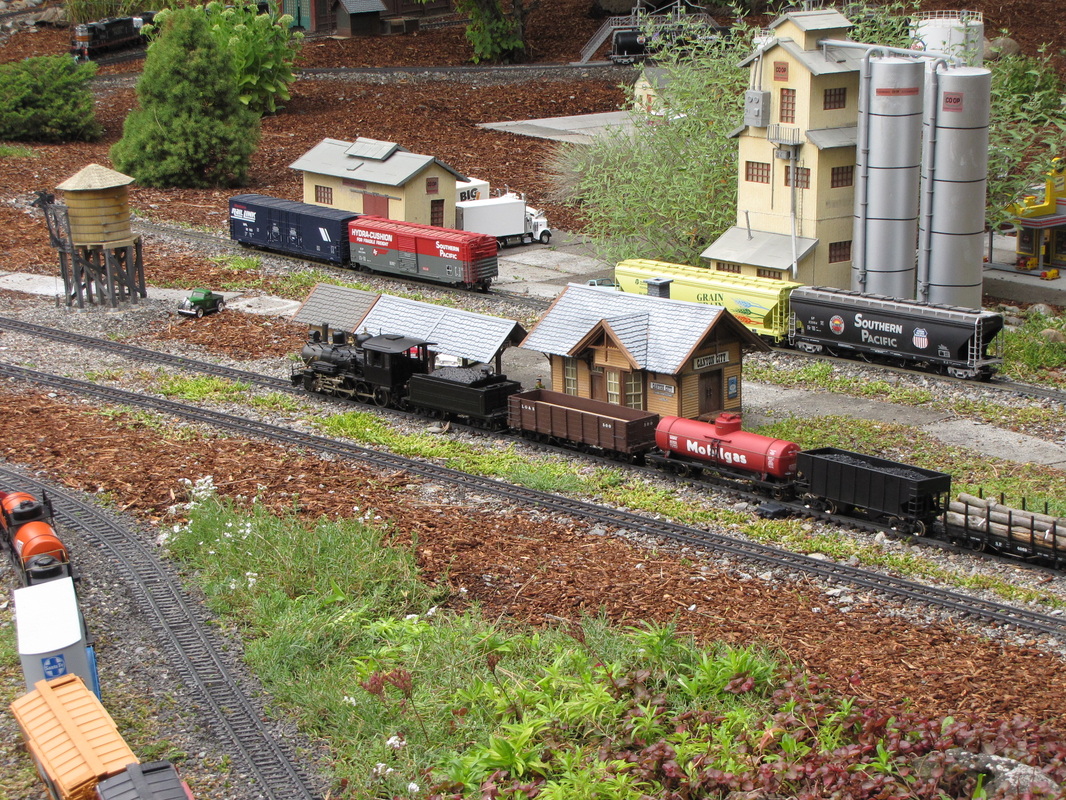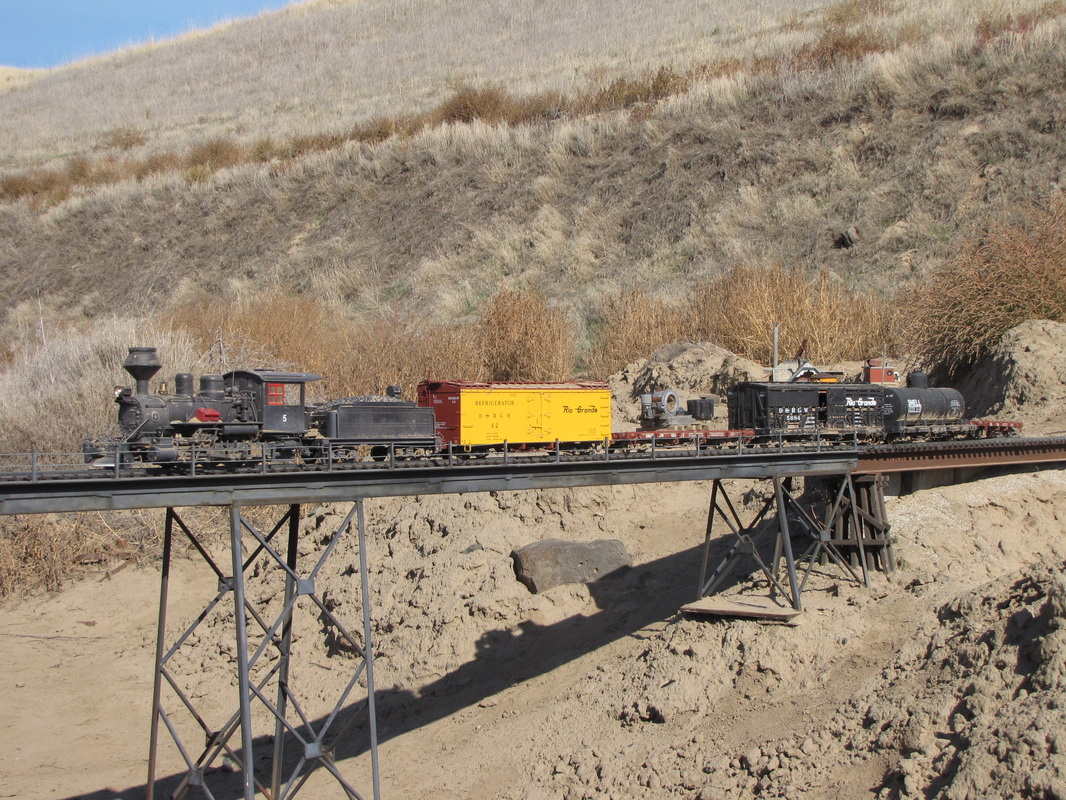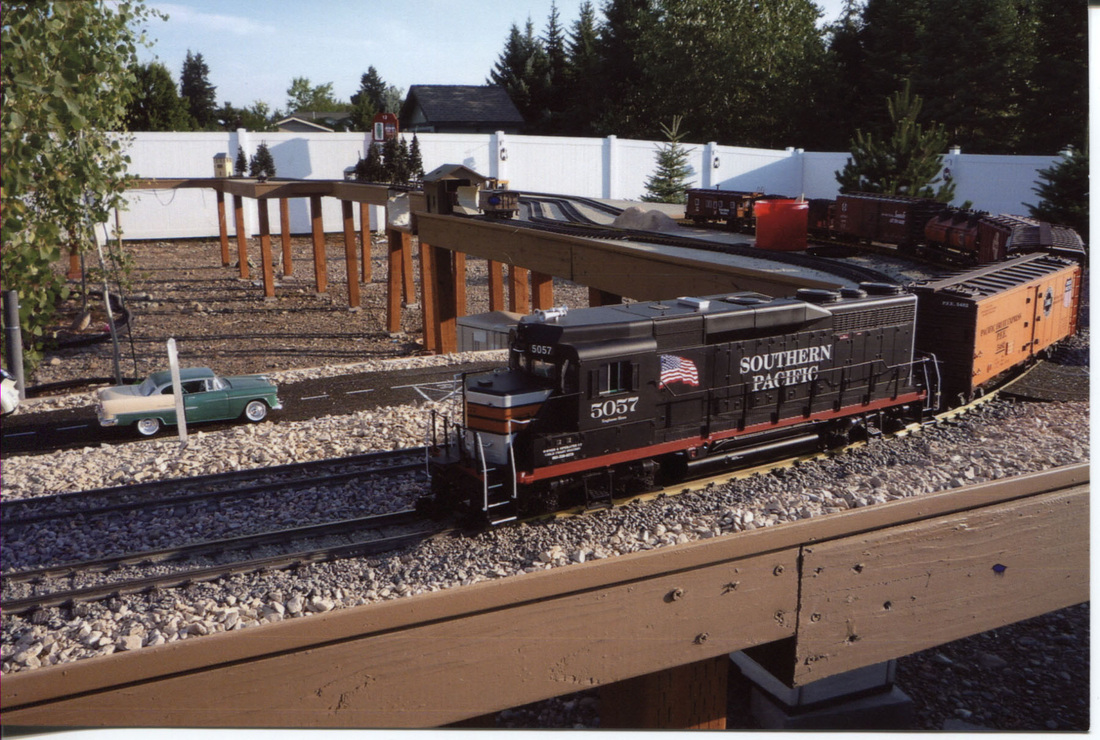Garden Railroading
Garden Railroads can be a misleading description of our hobby. The equipment used on 45mm (1 ¾”) gauge (the distance between the inside rail heads) track is designed to be used outside in the elements but is just as comfortable indoors. Because of the size or scale (the ratio of the modeled size to the life size prototype), Garden Railroads are often referred to as large scale and requires a large area to build a layout. The size of your layout is restricted by the real estate available and your budget.
Building a Garden Railroad is no different than building a smaller scale layout. You can pursue all aspects of the model railroading hobby, except outdoor layouts can entail the same challenges as building a real railroad and you can incorporate gardening/landscaping skills. Equipment, buildings, tunnels, bridges and trestles must be able to withstand the 1:1 real world elements.
When building a layout outdoors, there are three philosophies. The first is building a railroad in your existing garden/landscape utilizing full size plants and shrubs. The goal is that the railroad is secondary to the landscaping and when trains are not running the railroad is not intrusive. The second is building the railroad as the focus with the landscaping (full size and/or scale), buildings, etc. supporting the railroad setting, same as an indoor layout. These layouts are usually built depicting a time period and theme; logging, mining, manufacturing, agriculture. They open up a whole new world of dwarf and miniature landscaping. The third is to build a raised roadbed on bench work similar to indoor construction. This makes building scenery a challenge but puts the layout at a level easier to reach, not on your knees.
How your layout is powered will dictate your investment in track. Running the power (electricity) through the rails is best accomplished with brass rail. Track power requires extra care in laying the track to insure good continuity and continual maintenance to provide the flow of electricity from the rail to the pick-up contacts. Advantages of track power are that you can run equipment right out of the box, electricity is available for engine smoke generators and lighted rolling stock, and DCC can be used. Battery powered/radio controlled trains will run on any type of rail allowing for the use of less expensive aluminum rail. Rail maintenance is greatly reduced. Technical advances in batteries allows for long run times before recharging. Another advantage to battery power is you can run your trains on other layouts without issues. Disadvantages include limited use of smoke generators because of the draw on the batteries, and lighted rolling stock requires their own batteries to operate.
Building a Garden Railroad is no different than building a smaller scale layout. You can pursue all aspects of the model railroading hobby, except outdoor layouts can entail the same challenges as building a real railroad and you can incorporate gardening/landscaping skills. Equipment, buildings, tunnels, bridges and trestles must be able to withstand the 1:1 real world elements.
When building a layout outdoors, there are three philosophies. The first is building a railroad in your existing garden/landscape utilizing full size plants and shrubs. The goal is that the railroad is secondary to the landscaping and when trains are not running the railroad is not intrusive. The second is building the railroad as the focus with the landscaping (full size and/or scale), buildings, etc. supporting the railroad setting, same as an indoor layout. These layouts are usually built depicting a time period and theme; logging, mining, manufacturing, agriculture. They open up a whole new world of dwarf and miniature landscaping. The third is to build a raised roadbed on bench work similar to indoor construction. This makes building scenery a challenge but puts the layout at a level easier to reach, not on your knees.
How your layout is powered will dictate your investment in track. Running the power (electricity) through the rails is best accomplished with brass rail. Track power requires extra care in laying the track to insure good continuity and continual maintenance to provide the flow of electricity from the rail to the pick-up contacts. Advantages of track power are that you can run equipment right out of the box, electricity is available for engine smoke generators and lighted rolling stock, and DCC can be used. Battery powered/radio controlled trains will run on any type of rail allowing for the use of less expensive aluminum rail. Rail maintenance is greatly reduced. Technical advances in batteries allows for long run times before recharging. Another advantage to battery power is you can run your trains on other layouts without issues. Disadvantages include limited use of smoke generators because of the draw on the batteries, and lighted rolling stock requires their own batteries to operate.



